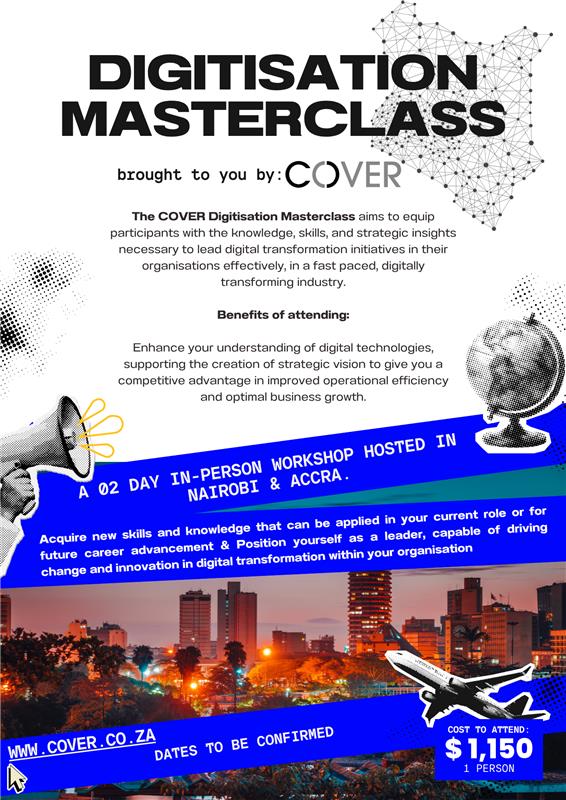Aligning succession models with strengths-based strategies
Johan Oosthuizen, Business Coach & Gallup-Certified Strengths Coach
Succession planning remains one of the most important, and often delayed, decisions for financial advisers.
At the 2024 FPI Professionals Convention, Jaco van Tonder outlined four practical succession planning models: (1) a sale to a large corporate, (2) a shared infrastructure model between practices, (3) a formal merger between firms, and (4) an organic internal succession strategy. Each model offers its own timeline, control dynamics, and legacy implications, and Van Tonder’s “age pillars” lens added a helpful demographic reality check.
However, beyond structure and timing lies a deeper layer of success: people. In my view, Gallup’s methodology and tools, CliftonStrengths®, BP10™, and team engagement insights, add measurable strategic value to each of these models. Whether planning for a clean break, designing a merger, or grooming an internal successor, these tools offer clarity, alignment, and continuity. Below, I’ve unpacked how Gallup’s strengths-based approach can enhance execution and reduce friction across all four succession options.
1. Selling to a large corporate institution
Gallup advantage:
- CliftonStrengths coaching helps founders navigate emotional readiness to let go, particularly for those high in Belief, Responsibility, or Significance.
- BP10 reveals if the seller is a Rainmaker or Expert, which informs brand value and transition risk.
- Gallup Q12 measures team engagement before and after the transition to manage morale and retention.
Key benefits:
- Prevents post-sale regret by surfacing identity and control issues.
- Improves negotiation clarity by identifying core values of the seller and team.
- Enhances cultural fit analysis between firm and corporate buyer.
2. Shared infrastructure model
Gallup advantage:
- CliftonStrengths identifies how potential partners collaborate (e.g., Harmony, Relator, Includer).
- Strengths-based team mapping ensures aligned work styles and communication preferences.
- BP10 clarifies whether either partner tends to dominate or defer, helping reduce later conflict.
Key benefits:
- Builds psychological trust in low-commitment arrangements.
- Minimizes interpersonal friction with proactive compatibility insights.
- Enables strength-aligned contingency planning for death or incapacity.
3. Formal merger between two firms
Gallup advantage:
- CliftonStrengths Team Grid highlights leadership overlaps, gaps, and potential friction points.
- BP10 supports builder role compatibility (e.g., combining a Rainmaker with a Conductor).
- Strengths-based onboarding helps integrate teams under a shared vision and operational ethos.
Key benefits:
- Promotes smoother cultural integration and shared leadership clarity.
- Provides a framework for balanced decision-making and equity distribution.
- Reduces the risk of post-merger breakdowns due to mismatched communication or values.
The COVER Digitisation Masterclass.
The COVER Digitisation Masterclass aims to equip participants with the knowledge, skills, and strategic insights necessary to lead digital transformation initiatives in their organisations effectively, in a fast paced, digitally transforming industry.
Benefits of attending:
Enhance your understanding of digital technologies, supporting the creation of strategic vision to give you a competitive advantage in improved operational efficiency and optimal business growth.
A 2 day in-person workshop hosted in Nairobi & Accra.
4. Organic succession (Internal buyout over time)
Gallup advantage:
- BP10 identifies if the successor has entrepreneurial talents (e.g., Risk, Profitability, Delegator).
- CliftonStrengths supports the development of leadership, client relationship, and strategic thinking abilities.
- Coaching enables a tailored, gradual handover aligned with both founder and successor strengths.
Key benefits:
- Creates a 10-year strengths-based growth plan with milestones.
- Builds trust in the successor’s capability and style.
- Preserves the firm’s values and service ethos for clients and staff.
Age pillars & intergenerational succession
Van Tonder’s framework of age-based succession readiness dovetails with Gallup’s talent development tools. For instance:
| Founder challenge | Gallup tool & application | Benefit |
| Struggling to let go | CliftonStrengths coaching for identity transition | Emotional readiness and purpose preservation |
| Successor is unprepared or too young | BP10 + development plan for entrepreneurial readiness | Accelerated confidence and role-fit |
| Culture mismatch with younger team | Strengths team sessions for empathy and trust-building | Cohesive multigenerational team culture |
| Unclear future role post-transition | Role redesign using strengths | Reduces turf issues and role confusion |
Conclusion: Gallup = Strategic edge in succession planning
Gallup’s tools don’t just help you choose a succession model, they help you make it work. Whether your path involves a fast exit, a shared structure, a formal merger, or a long-term internal succession, strengths-based planning offers:
- Clarity – about values, roles, and leadership tendencies.
- Alignment – of personalities, vision, and operational styles.
- Continuity – for clients, staff, and legacy.
In a world where legacy and leadership are inseparable, building succession plans on the foundation of human strengths is not only wise, it’s necessary.


